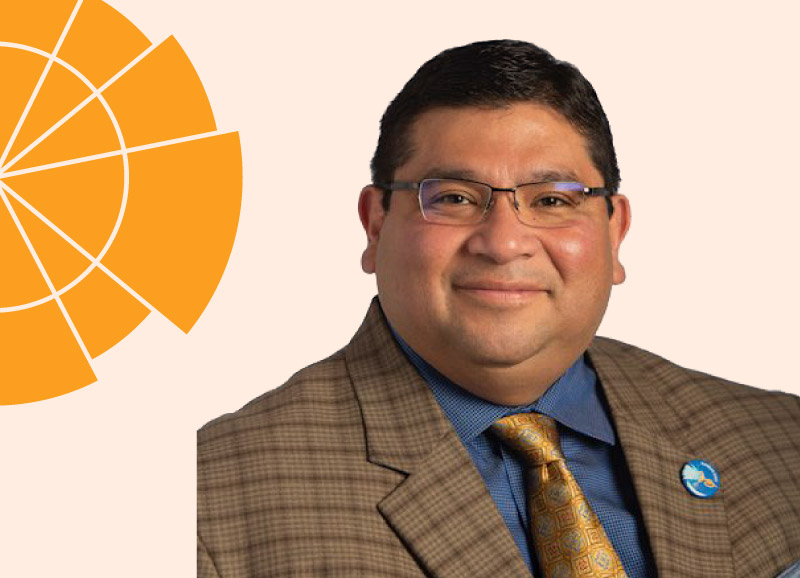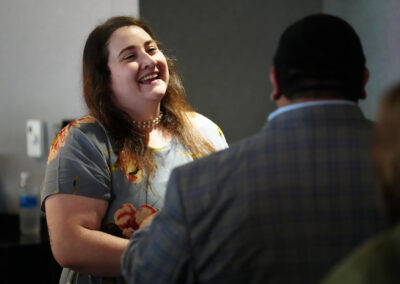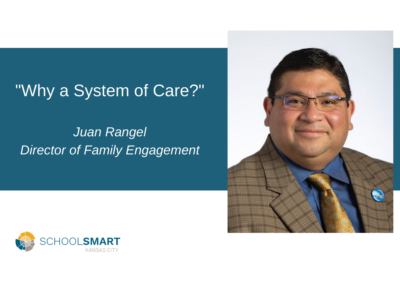
By Juan Rangel
In Our Schools, Culture Should be Diverse, but Opportunity Should be Universal
In the history of our country, there have been many milestones in celebrating the cultural mosaic that is the United States of America, and the vibrant and different communities that reside here. In 1988, when Ronald Reagan elevated the previously established ‘Hispanic Heritage Week’ to National Hispanic Heritage Month, it was seen as a long awaited recognition of the significant impact that Hispanic and Latin Americans have made to our nation’s history, and has been widely celebrated ever since.
However, the celebration of cultures is still not synonymous with equal opportunity. Our country continues to be devastated by hostilities towards immigrants, systemic xenophobia, and cruelty towards families seeking new opportunities in the United States. These cruel realities have an immeasurable impact on the wellbeing of Hispanic and Latinx children, and nowhere is that more evident than within our education system.
For generations, national and statewide education models have assumed that all children are – or should be considered – alike. Regardless of socio-economic advantages, racial identity, preferred first language, or immigration status, K-12 students in Missouri are largely taught by white teachers from different backgrounds, and student performance is evaluated using antiquated assessment methods, with students competing for the same post-high school college and career placements.
This one-size-fits-all model does not allow for students of different backgrounds to access resources to help them succeed based on challenges related to culture, language, or socio-economic status. Treating all children as culturally identical students creates disparity in opportunity, and as a result, certain populations of students succeed, and others are likely to face obstacles.
In Kansas City Missouri public schools, over 25% of the student population is Hispanic or Latinx, however, the percentage of educators that identify as Latinx in KCMO schools is currently only five percent*. This lack of representation in classrooms hinders teachers’ ability to understand cultural challenges a student might be facing and ensuring students feel connected to their schools. This example is just one of many opportunity disparities that exist for vulnerable groups in urban school districts like Kansas City and, ultimately, these blind spots can lead to Hispanic students performing lower compared to their white peers.
But where there is work to be done, there is also hope. As the Spanish proverb says, “Dime con quien andas y te dire quien eres” which translates to “Tell me who you are with and I will tell you who you are.” Kansas City’s identity is shaped by our Hispanic and Latinx communities, and I see proof daily that our city is committed to making improvement for our children. I believe the answer to many of the obstacles faced in our schools is the development of intentional programs and targeted investment opportunities that recognize the unique challenges for each student population and work specifically towards reducing these disparities – not treating all schools and all students as the same. This belief is shared by many, and I am inspired by the work that is happening daily to work towards creating these opportunities. Our city and our Latinx community is stronger because of who we are with.
For SchoolSmartKC, we remain focused on closing the achievement gap by removing obstacles to success for students. We have strategically funded programs to ensure we are able to move the needle further towards equal opportunity for all students in KCMO, and we are proud to have made actionable investments that celebrate our Hispanic and Latinx students, while also providing academic opportunity and the family support needed to close the achievement gap. Our work has included the expansion of schools like Scuola Vita Nuova (SVN) to provide 207 new quality seats and support for improved academic outcomes at Guadalupe Education Center and many other schools that serve a significant number of Latinx students. We have also been proud of providing relief funding support to the historic Mattie Rhodes Center during the COVID-19 crisis to ensure families have access vital resources, such as utility bill assistance, that allow their students to stay in virtual .
These investments are a part of a larger movement that is taking place in Kansas City. We have long-time organizations, such as the Guadalupe Centers and the Hispanic Development Fund, that work to support and further enrich these communities, recognizing the individual challenges that exist. Recently, we have seen new programs and organizations launch to specifically support the needs of Latinx educators. The Latinx Education Collaborative (LEC), founded in 2018, has become a vocal advocate for the needs of Latinx educators, providing networking events, professional development, and support, including the annual Evolución Conference. Their mission is to grow new talent and increase the representation of Latinx educators in Kansas City – thereby increasing support to Latinx students and their community.
The progress made through the stewardship of these organizations is remarkable even though it is in its infancy. By giving a greater voice, and by recognizing the unique experiences of our Latinx families and students, we will be able to ensure that these students are afforded the same educational opportunities as other student populations. As we celebrate National Hispanic Heritage Month, we encourage the Kansas City community to join us and support schools and organizations that recognize and celebrate our cultural differences and work intentionally to close the opportunity gap for Kansas City’s Hispanic and Latinx families.
* according to 2020 data from settheschoolsfree.org



